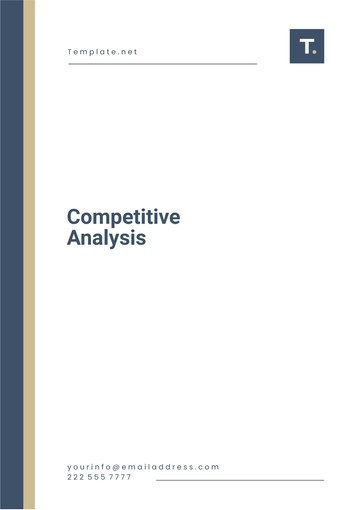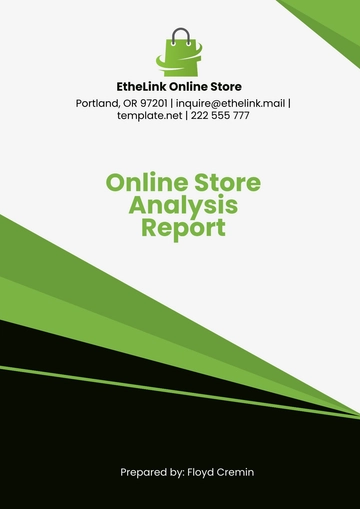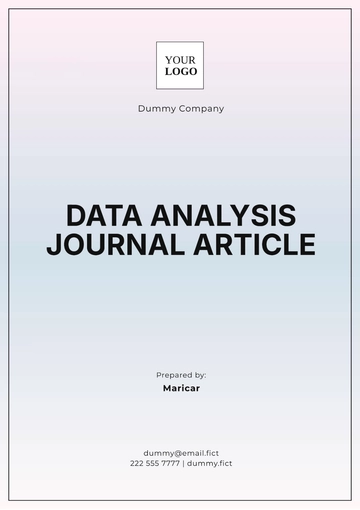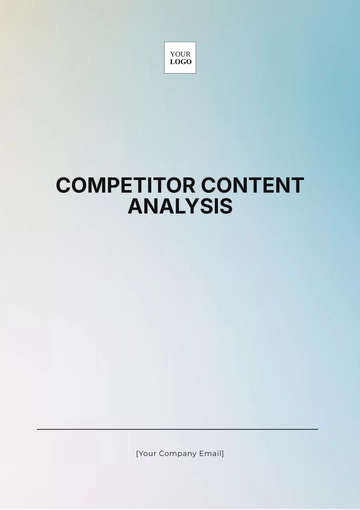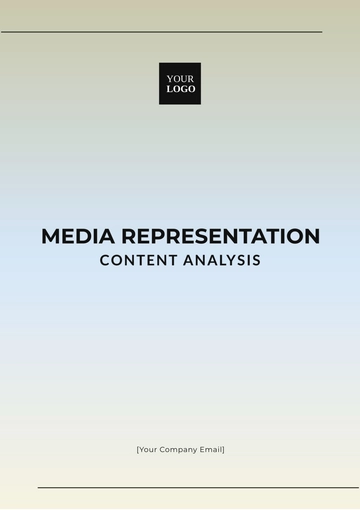Free Literary Business Tactics Analysis

Prepared by: [YOUR NAME]
Date: [DATE]
1. Introduction
The literary business landscape is continuously evolving, influenced by technological advancements, market demands, and shifting consumer behaviors. This analysis provides an in-depth examination of the various business tactics employed within the literary industry, offering insights into strategic approaches that can be applied to achieve commercial success.
1.1 Purpose
The purpose of this analysis is to provide a comprehensive overview of effective business tactics in the literary industry, enabling authors, publishers, and literary agents to optimize their strategies.
1.2 Scope
This analysis covers a multitude of tactics, including marketing strategies, distribution channels, pricing models, and innovation in content delivery.
2. Market Analysis
2.1 Industry Overview
The literary market encompasses a wide range of products, from traditional print books to digital formats. The market is segmented based on genres, formats, and target audiences.
2.2 Key Players
The key players in the literary business include:
Authors
Publishing Houses
Literary Agents
Online Retailers
Brick-and-Mortar Bookstores
2.3 Consumer Trends
The following trends are currently influencing consumer behavior:
Increased preference for e-books and audiobooks
Growing popularity of independent and self-published works
Demand for diverse and inclusive content
Preference for subscription services and bundling options
3. Marketing Strategies
3.1 Digital Marketing
Digital marketing has become a cornerstone of successful literary business tactics. Key components include:
Social Media Advertising
Content Marketing
Email Campaigns
Search Engine Optimization (SEO)
3.2 Influencer Partnerships
Collaborating with influencers can significantly boost visibility and credibility:
Book Bloggers and Reviewers
Social Media Influencers
Celebrities and High-Profile Endorsements
3.3 Traditional Advertising
Despite the rise of digital marketing, traditional advertising still plays an essential role:
Print Ads in Literary Magazines
Radio and TV Commercials
Billboards and Public Transit Ads
4. Distribution Channels
4.1 Traditional Publishing
Traditional publishing involves the distribution of books through established publishing houses with extensive distribution networks:
National and International Bookstores
Library Networks
Wholesale Distributors
4.2 Self-Publishing
Self-publishing has democratized the literary market, allowing authors to reach audiences directly:
Online Retail Platforms (e.g., Amazon, Barnes & Noble)
Print-on-Demand Services
Direct Sales through Personal Websites
4.3 Digital Platforms
Digital platforms offer extensive reach and low distribution costs:
E-Bookstores (e.g., Kindle, iBooks)
Audiobook Platforms (e.g., Audible)
Subscription Services (e.g., Scribd)
5. Pricing Models
5.1 Fixed Pricing
This traditional pricing model involves setting a fixed price for books, allowing for straightforward profit calculations:
Book Type | Typical Price Range |
|---|---|
Hardcover | $20 - $35 |
Paperback | $10 - $20 |
E-Book | $3 - $10 |
Audiobook | $15 - $25 |
5.2 Dynamic Pricing
Dynamic pricing allows flexibility based on market demand and timing:
Promotional Discounts
Seasonal Pricing
Event-Based Pricing
5.3 Subscription Models
Subscription models offer readers access to a vast collection of books for a recurring fee:
Monthly or Annual Subscriptions
Tiered Membership Levels
Inclusive of E-books and Audiobooks
6. Innovation in Content Delivery
6.1 E-books
E-books provide a convenient and cost-effective way to consume literature:
Instant Download Availability
Cross-Platform Compatibility (e-readers, tablets, smartphones)
Enhanced Features (e.g., interactive content, multimedia)
6.2 Audiobooks
Audiobooks have grown in popularity, offering an alternative way to enjoy books:
Accessibility for Visually Impaired Readers
Convenience for Multitasking (e.g., during commutes, workouts)
Narration by Professional Voice Artists
6.3 Serialized Content
Serialized content, delivered in episodes or installments, engages readers over time:
Subscription-Based Access
Interactive Reader Engagement
Flexibility for Authors to Adjust Based on Feedback
7. Conclusion
The literary business landscape presents numerous opportunities for innovation and growth. By adopting diverse marketing strategies, exploring various distribution channels, and implementing flexible pricing models, stakeholders in the literary industry can maximize their reach and profitability. Staying attuned to consumer trends and leveraging new content delivery methods will be crucial in navigating the future of the literary market.
- 100% Customizable, free editor
- Access 1 Million+ Templates, photo’s & graphics
- Download or share as a template
- Click and replace photos, graphics, text, backgrounds
- Resize, crop, AI write & more
- Access advanced editor
Introducing the Literary Business Tactics Analysis Template by Template.net: Your essential tool for in-depth business strategy evaluations. This editable and customizable template allows you to analyze and refine literary business tactics with precision. Effortlessly adjust parameters using our Ai Editor Tool to align with your specific goals. Elevate your business insights with our expertly crafted template, designed for clarity and effectiveness.
